
Welcome to the enchanting world of North East England, a hidden gem often overlooked by travelers from both near and far. Nestled between the Scottish borders and the captivating counties of Yorkshire, this captivating region holds a treasure trove of experiences waiting to be discovered!
At the heart of this land lies the picturesque River Tyne, surrounded by a string of charming former coal-mining towns. These towns once fueled the shipbuilding and heavy industries that resonated with the world. However, North East England is not solely an industrial hub; it’s a haven of natural wonders.

As you venture through this captivating region, you’ll be captivated by rolling landscapes adorned with ancient dry-stone walls, expansive dales, and untamed moorlands that stretch as far as the eye can see. Don’t miss the windswept castles dotting the coastline, gazing out over the majestic North Sea.
Among the many treasures North East England has to offer, we hold a special place in our hearts for the historic city of York, with its rich heritage and timeless charm.
So, whether you’re planning a short weekend escapade, a week of exploration, or an extended stay, we’re excited to present you with eight fantastic places to visit in North East England. These carefully curated recommendations come straight from us and our fellow travel bloggers, ensuring you experience the very best this captivating region has to offer. Get ready for an unforgettable adventure!
This post may contain affiliate links. Please read our full disclosure policy here.
TABLE OF CONTENTS
8 Great Places to Visit in North East England
Taking its name from the castle of the same name which dates back to the 12th century, Barnard Castle is the main market town of Teesdale, County Durham. The town and the castle are set on a rocky outcrop high above the River Tees and have attracted famous visitors for centuries.
Sir Walter Scott visited and wrote about the area, Charles Dickens stayed and also wrote about the area and the town’s independent school has famous alumni that include rugby internationals Rob Andrews and the Underwood brothers.
The town hosts a traditional market every Wednesday in the centre, and there’s also a farmer market on the first Saturday of each month. The town also hosts an annual ‘Meet and Carnival’ in May and an increasingly popular 1940’s weekend.
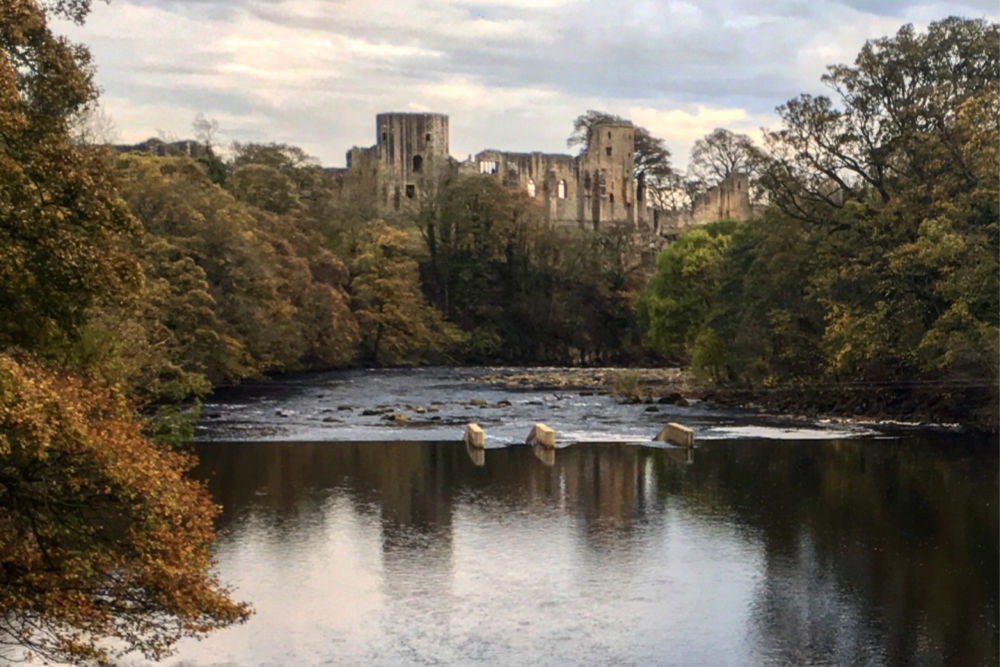
MUST DO IN BARNARD CASTLE:
- Barnard Castle: Maintained now by English Heritage, the castle dates to the 12th century. It contains artefacts from Richard III whose boar emblem is found here and offers superb views over the surrounding countryside.
- The Bowes Museum: Considered one of the most important museums outside of London, this French Chateau contains art from Goya, porcelain, and a stunning mechanical Silver Swan. The building itself is also seriously impressive.
- Gateway to Teesdale: Barnard Castle is viewed as the gateway to one of the Areas of Outstanding Natural Beauty – visit the incredibly picturesque High Force and Low Force waterfalls and walk part of the Pennine Way or the less arduous Teesdale Way.
Contribution from Sarah of ASocialNomad
READ MORE: Like exploring castles? Check out these 15 beautiful and historic castles to visit in England!
Staithes is a very picturesque fishing village in the North York Moors National Park. This sleepy hamlet, nestled between two cliffs, gives the illusion that nothing has changed for hundreds of years.
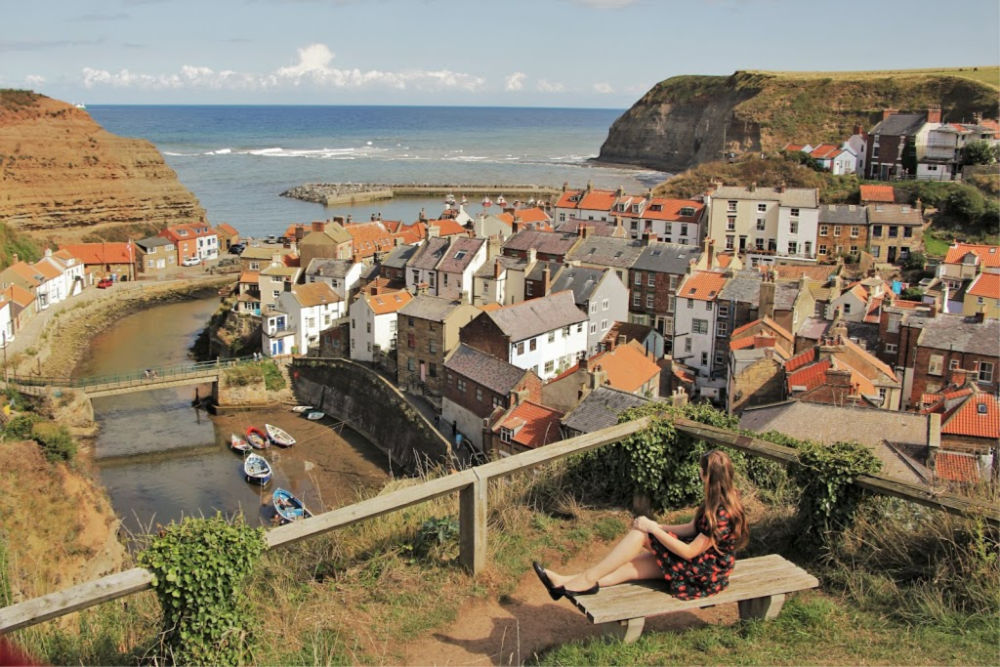
MUST DO IN STAITHES:
- Race up to the fantastic viewpoint: When all of the other visitors are heading to the harbour, you should instead head up the narrow winding stairs which lead to a patch of green on the cliff edge. You’ll find two old benches standing proudly on the hilltop that have endured many years of windy weather which allows you to take in the view of Staithes below. This is truly a must-do when you visit Staithes.
- Walk down its little alleys and go cottage name spotting: Notice the lovely cottage names as you wander through the maze of little streets. Rose of England, Confidence Cottage, Blue Jacket House and True Love can be seen. What cannot be seen however are house numbers because the inhabitants found the idea of numbering the houses daft. They argue that the romantic names are part of Staithes’ history and removing them would be taking away part of the village’s past. Therefore, as you are wandering around take note of the sweet cottage names of which the Staithians are fiercely proud of.
- Enjoy a pint by the beach: After your wandering up to the viewpoint and meandering through the quaint streets you will in no doubt be in need of refreshment. Make your way to the seafront and the beach where you will find a local favourite, the Cod & Lobster. There is a huge range of food and drink at this pub, including three vegetarian and vegan options! Grab a drink and sit outside overlooking the harbour and bay. What a great way to end your trip in Staithes
Contribution from Anna of MyTravelScrapbook
York, a pretty little town located about 20 minutes by train from Leeds is definitely a must-visit in England.
You will notice the historic walls as soon as you leave the train station reminding you of medieval times, including cobbled streets, pretty tea rooms, and architecture with an emphasis on the Gothic style.
A mix of old and modern, the city offers a variety of activities for all types of travellers making it the perfect short getaway, even if only a day trip from London. While there are quite a few attractions you can visit, here are the top three that you must when visiting York.
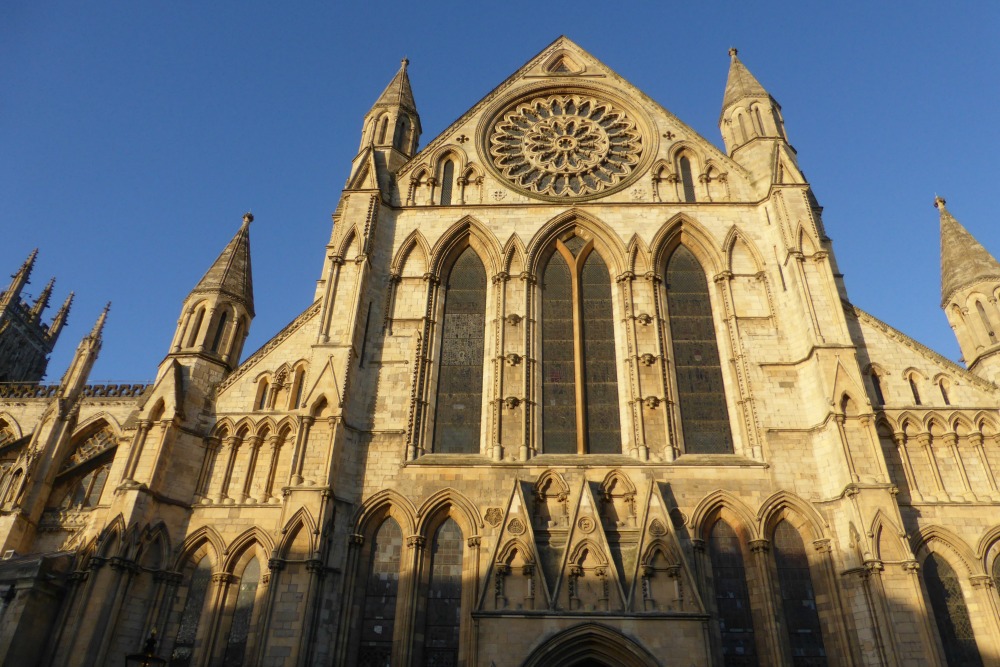
MUST DO IN YORK:
- York Minster: Located near the city centre, the best views of the city can be seen from the top of York Minster’s central tower. While it is quite a climb (275 steps), once at the top you’ll get a glimpse of the walls, the river and pretty much the whole of the city! The Jorvik Viking Centre is located right around the corner from the cathedral and is another popular activity for adults and kids alike, where everyone can play dress up too!
- The Shambles: The Shambles is a favourite of many visitors to York and possibly the most famous attraction. The Shambles is one of the best-preserved medieval streets in the whole world. Tiny, quirky shops which were once butchers now have fudge, tea and cookies on offer. The cobbled streets are very narrow and if you pay attention you’ll be able to see the butcher hooks on some of them!
- Have tea at Betty’s: Nothing is as British as having a ‘cuppa’ and Betty’s is quite the experience for it. Fancy cutlery and a wide variety of sandwiches, cakes and tasty scones make it a lovely spot to head up on a rainy afternoon.
Contribution from Lavina of Continent Hop
Whitby is located in Yorkshire, which is one of my favourite places to visit in England. On the northeast coast, Whitby is famous for its fish and chips, Blue Flag beaches and its old-fashioned English seaside sensibility.
Whitby is also known for many other reasons, that make is the perfect British seaside town. Whitby Jet, a fossilized wood, was a Victorian favourite used by jewellers. The North Yorkshire Steam Railway transports passengers back in time and heads out to Goathland which was used for Harry Potter’s journey to Hogwarts. Whitby also draws in thousands of Goths and Steampunk folks with two festivals yearly that celebrate all things horror and Victorian.
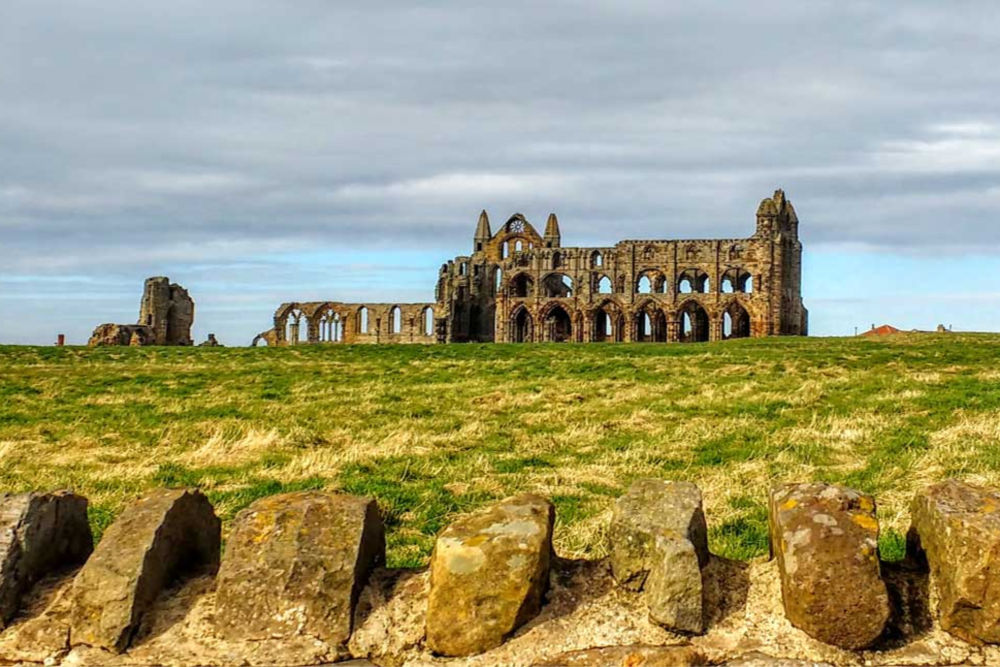
MUST DO IN WHITBY:
- Whitby Abbey: Whitby is a haunted place and makes a great horror story location. Whitby Abbey is a 1340-year-old ruin that stands on top of East Cliff. If you are a Dracula fan and have read Stoker, you will know that Whitby is where Dracula first comes ashore in Britain in the guise of a black dog.
- Beaches: From the Abbey, you can walk the 199 steps down to the old town and the beaches. There are two beaches in Whitby – Tate Hill, to the east of the river is small and sheltered, and West Cliff is bigger, with beach huts, deckchairs, and donkey rides.
- Shops and Museum: When wandering the narrow streets of Whitby stop in and visit the Captain Cook Memorial Museum (he was an apprentice here). Whitby also has some fabulous eclectic little shops for interesting gifts and trinkets. Not your typical stuff, you can find lots of old shipping antiques, privateer and pirate gifts as well as the traditional Whitby Jet. Keep an eye out for old-fashioned sweet shops with jar upon jar of candy and chocolate and antique shops galore, such as Justin Chocolatiers for some amazing chocolates.
Contribution from Faith of XYU and Beyond
The northeast county of Durham is three hours out of London by train, near England’s east coast. Once you arrive you’ll understand how the city got its name from a Celtic-Norse portmanteau that means “hill fort island”.
The quaint, cobbled city of Durham is home to two UNESCO World Heritage Sites and was once crowned the “best city in the UK” by Condé Nast. And all for good reason, which you will find out on a visit.
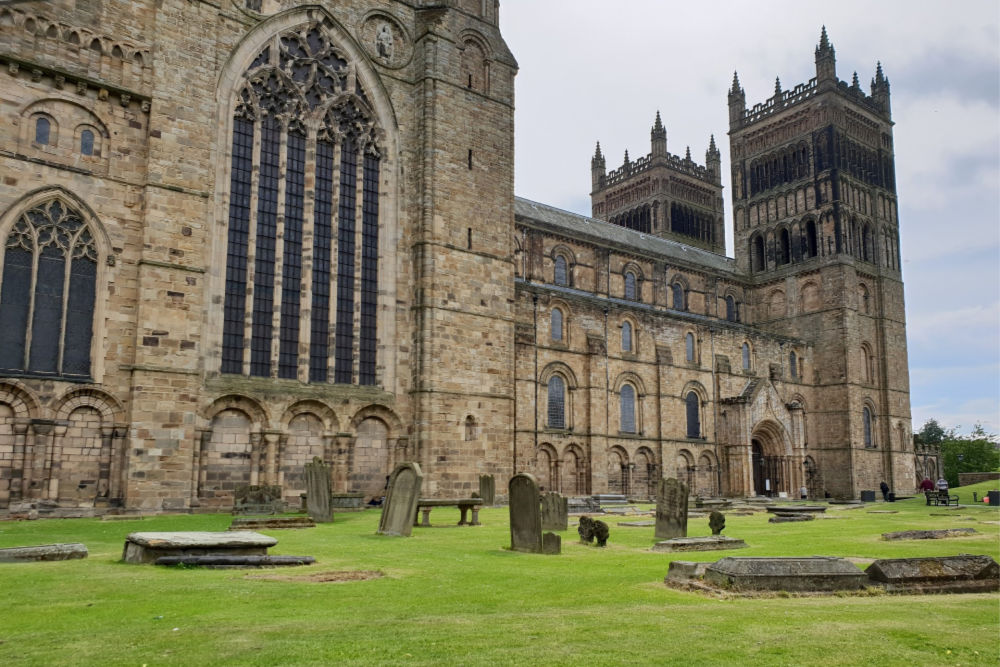
MUST DO IN DURHAM:
- Durham Cathedral: Durham is perhaps best known for its 11th-century cathedral, which attracts tourists for its UNESCO World Heritage Site status and the fact that it was used as a set for the Harry Potter films, as well as a number of other box office hits. It is believed to be one of England’s finest examples of Norman Romanesque architecture with a museum that hosts permanent and temporary exhibits and collections.
- Durham Castle: Just across the lawn from the cathedral is the town’s second UNESCO World Heritage Site – Durham Castle – which was also once a fortress. Today it houses one of the country’s best universities and can be visited on a guided tour, which will narrate its history, heritage and what it’s like to study within its walls. It’s really well worth taking a walk along the Wear River that runs alongside the cathedral and castle.
- Beamish Museum: Durham folk are rather proud of the Beamish Museum. The 300-acre, open-air living, working museum offers a glimpse into what northeast England must have looked like from the 1820s until the 1940s. Here you can find everyday items from steam engines to sewing machines.
Contribution from Iga of Eager Journeys
READ MORE: Interest in exploring more UNESCO World Heritage sites in England? Check out these8 great UNESCO sites to visit from London!
Newcastle doesn’t always get the attention it deserves, and it is often overshadowed by other cities in the north of England such as Manchester, Liverpool and York. But there are so many reasons why Newcastle should be everyone’s next UK destination.
Located in the northeast of England, Newcastle has joined forces with Gateshead, making NewcastleGateshead. They’ve co-existed side by side since Roman times, despite being divided by the River Tyne, and they are now a centre for culture, a vibrant nightlife, inspiring heritage and award-winning dining. And not only that, it has been voted the number one place in the world to visit in 2018 by Rough Guides. Do you need any more reasons to visit?

MUST DO IN NEWCASTLE:
- BALTIC Centre for Contemporary Art: Located inside a re-purposed flour mill, BALTIC has an ever-changing calendar of exhibitions and activities created by a number of the world’s most prominent artists and designers.
- Sage Gateshead: Named as one of the top concert halls on the planet, seeing a performance here is a must. And if you are a lover of architecture, then you’re in for a treat!
- Dinner and drinks: The ‘House of Tides’ is Newcastle’s only Michelin star restaurant and should be on every foodie’s itinerary. Set within a Grade 1 listed 16th-century former merchant’s townhouse, it focuses on natural, seasonal and sustainable food. After dinner, enjoy a few drinks at ‘The Cluny’, one for Newcastle’s coolest drinking spots. The Cluny is a bar, an art gallery and a music venue rolled into one and it attracts the city’s most artistic residents.
Settled since the Iron Age, Lincoln was a major settlement in Roman times when they built a sophisticated aqueduct system to bring water to the city. Several city gates can still be found around the city dating from as early as the 3rd-century.
The city also had important roles in both world wars. It was here, in Lincoln, that the first military tanks were invented for use on the Western Front during World War I. Today the Royal Air Force’s famous aerobatic display team the ‘Red Arrows’ are based at RAF Scampton just to the north of the city.
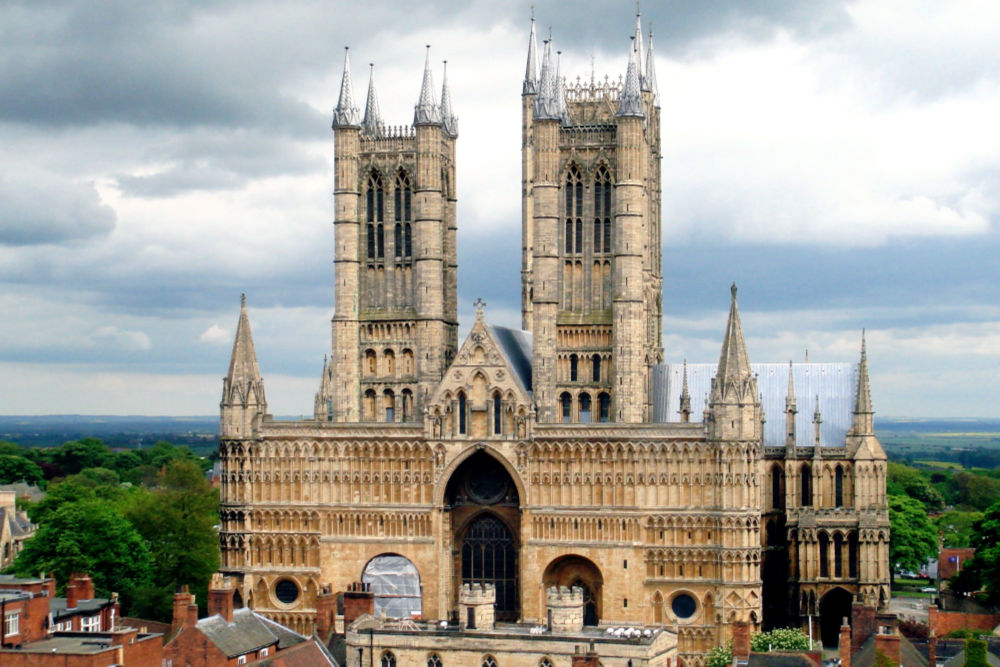
MUST DO IN LINCOLN:
- Lincoln Cathedral: The tallest building in the world for 238 years after it surpassed the great pyramid of Giza in 1311, though construction started in 1072! It then lost the title when the central spire was destroyed by a storm in 1549. It is the third-largest cathedral in Britain and full of interesting details such as the Lincoln Imp and the Rose windows.
- Steep Hill: Voted “Britain’s Best Street”, Steep Hill offers unique stores offering many different speciality items for sale. But don’t just come to shop, some of the buildings on the street date back to the 12th-century and the whole street is full of historic interest. Be warned though, the street is well named with a gradient of 1 in 7!
- Lincoln Castle: Built in the 11th-century by William the Conqueror to extend his control north, Lincoln Castle protected several key trading routes in the area. A walk around the walls offers great views whilst the Victorian prison is well worth exploring. The castle is also home to an original 1215 Magna Carta, one of the most important documents in history as recognised by its inclusion in the UNESCO Memory of the World Register.
READ MORE: Looking for more great places to visit in England? Check out these 8 great places to visit in North West England!
You can’t go much further north in England than Berwick-upon-Tweed; just a couple of miles north of the town and you’ll find yourself crossing the border into Scotland! The town is the northernmost in England and its proximity to the border meant it changed hands between the English and the Scots on multiple occasions in the first few centuries of the second-millennium.
Even though the town has been on the English side of the border since 1482, some still campaign for it to be in Scotland. The town’s football and rugby teams are unique in that they play in the Scottish leagues for their sport, despite their teams being based in England.
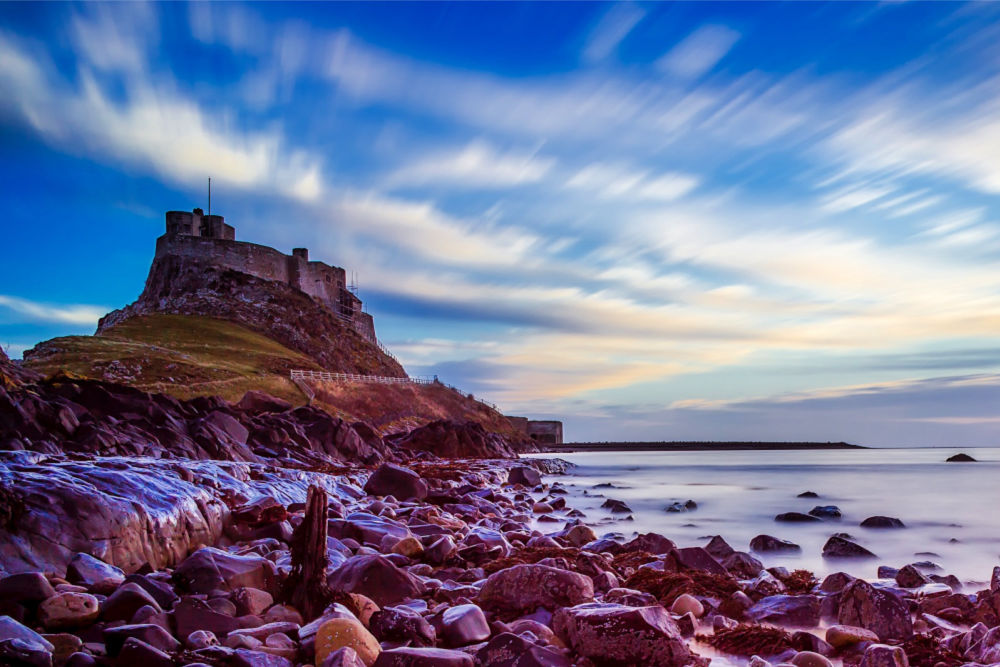
MUST DO IN BERWICK-UPON-TWEED:
- Lowry Trail: The artist LS Lowry is famous for his “matchstick men” of industrial scenes and the terraced house in the northwest of England, but he also spent quite some time in Berwick on holiday and produced over twenty images of the town. The Lowry Trail follows in his footsteps and showcases parts of the town where Lowry worked. The trail also takes in the city walls for views of the city and several towers and other defensive structures of the town.
- Berwick Barracks: The first purpose-built military barracks in the country, Berwick Barracks were constructed in the early 18th-century. Today they house three museums: “By the Beat of Drum” details the life of a British soldier with scenes of how life would have been in the barracks, “King’s Own Scottish Borderers” is a regimental museum with a collection of artefacts from the 325-year history of the regiment, and the Berwick Museum and Art Gallery is a collection of items from Berwick’s past industries.
- Holy Island: 11-miles south of Berwick is Holy Island which is only accessible during low tides across the causeway. The most famous structure on the island is the Lindisfarne Priory which was founded in 635AD by Saint Aidan. Other interesting things to visit are the two lighthouses that guide ships and Lindisfarne Castle which dates from 1550.
North East England has proven to be a treasure trove of diverse experiences, where history and modernity coexist harmoniously and we hope you’ve been captivated by the region’s charm and allure.
From the historic streets of York, where the past and present blend seamlessly, to the awe-inspiring grandeur of Durham’s cathedral, our love for this enchanting region only grows stronger with every visit, and we hope you, too, have fallen under its spell.
We know we’ll be back to explore more and we hope you have a wonderful time on your own visit to the North East England.
Looking for more information to plan your visit to England? You may find these articles helpful.
RESOURCES | PLAN YOUR TRIP TO ENGLAND
To book flights, rental cars, accommodations, and activities for your trip, please check out our recommended travel providers, favourite apps and websites.
- For more great weekend ideas around England and the rest of Britain, check out one of my favourites – 52 Great British Weekends: A Seasonal Guide to Britain’s Best Breaks
- For weekend ideas in London – The Weekend Starts Here: Fifty-Two Weekends of Things to See and Do – will give you lots of ideas!
- For all things England, you can’t go wrong with Rick Steves! Check out his England travel guide, full episodes of his TV show, or download his app for excellent audio tours.
Some of the links in the post above are affiliate links. This means if you click on the link and purchase the item, we will receive an affiliate commission but this does not affect the price to you. Please read our full disclosure policy here.





